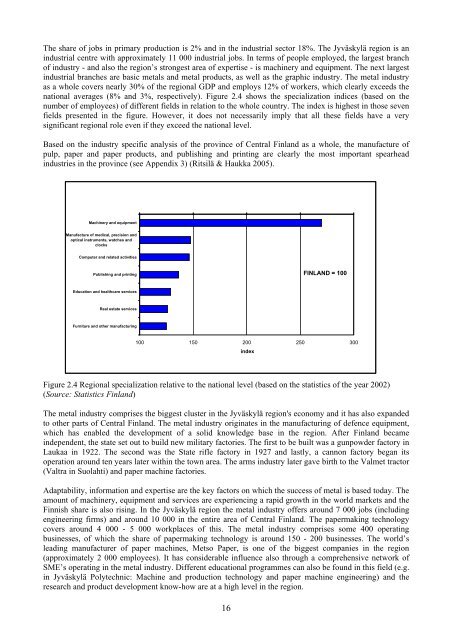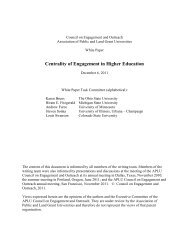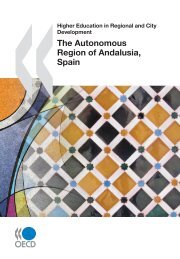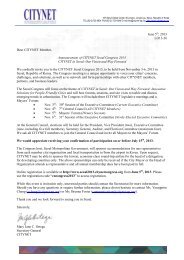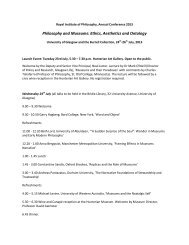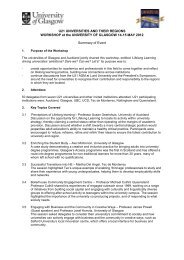Finland - Jyvaskyla Region - Final Self-Evaluation Report.pdf
Finland - Jyvaskyla Region - Final Self-Evaluation Report.pdf
Finland - Jyvaskyla Region - Final Self-Evaluation Report.pdf
Create successful ePaper yourself
Turn your PDF publications into a flip-book with our unique Google optimized e-Paper software.
The share of jobs in primary production is 2% and in the industrial sector 18%. The Jyväskylä region is anindustrial centre with approximately 11 000 industrial jobs. In terms of people employed, the largest branchof industry - and also the region’s strongest area of expertise - is machinery and equipment. The next largestindustrial branches are basic metals and metal products, as well as the graphic industry. The metal industryas a whole covers nearly 30% of the regional GDP and employs 12% of workers, which clearly exceeds thenational averages (8% and 3%, respectively). Figure 2.4 shows the specialization indices (based on thenumber of employees) of different fields in relation to the whole country. The index is highest in those sevenfields presented in the figure. However, it does not necessarily imply that all these fields have a verysignificant regional role even if they exceed the national level.Based on the industry specific analysis of the province of Central <strong>Finland</strong> as a whole, the manufacture ofpulp, paper and paper products, and publishing and printing are clearly the most important spearheadindustries in the province (see Appendix 3) (Ritsilä & Haukka 2005).Machinery and equipmentManufacture of medical, precision andoptical instruments, watches andclocksComputer and related activitiesPublishing and printingFINLAND = 100Education and healthcare servicesReal estate servicesFurniture and other manufacturing100 150 200 250 300indexFigure 2.4 <strong>Region</strong>al specialization relative to the national level (based on the statistics of the year 2002)(Source: Statistics <strong>Finland</strong>)The metal industry comprises the biggest cluster in the Jyväskylä region's economy and it has also expandedto other parts of Central <strong>Finland</strong>. The metal industry originates in the manufacturing of defence equipment,which has enabled the development of a solid knowledge base in the region. After <strong>Finland</strong> becameindependent, the state set out to build new military factories. The first to be built was a gunpowder factory inLaukaa in 1922. The second was the State rifle factory in 1927 and lastly, a cannon factory began itsoperation around ten years later within the town area. The arms industry later gave birth to the Valmet tractor(Valtra in Suolahti) and paper machine factories.Adaptability, information and expertise are the key factors on which the success of metal is based today. Theamount of machinery, equipment and services are experiencing a rapid growth in the world markets and theFinnish share is also rising. In the Jyväskylä region the metal industry offers around 7 000 jobs (includingengineering firms) and around 10 000 in the entire area of Central <strong>Finland</strong>. The papermaking technologycovers around 4 000 - 5 000 workplaces of this. The metal industry comprises some 400 operatingbusinesses, of which the share of papermaking technology is around 150 - 200 businesses. The world’sleading manufacturer of paper machines, Metso Paper, is one of the biggest companies in the region(approximately 2 000 employees). It has considerable influence also through a comprehensive network ofSME’s operating in the metal industry. Different educational programmes can also be found in this field (e.g.in Jyväskylä Polytechnic: Machine and production technology and paper machine engineering) and theresearch and product development know-how are at a high level in the region.16


